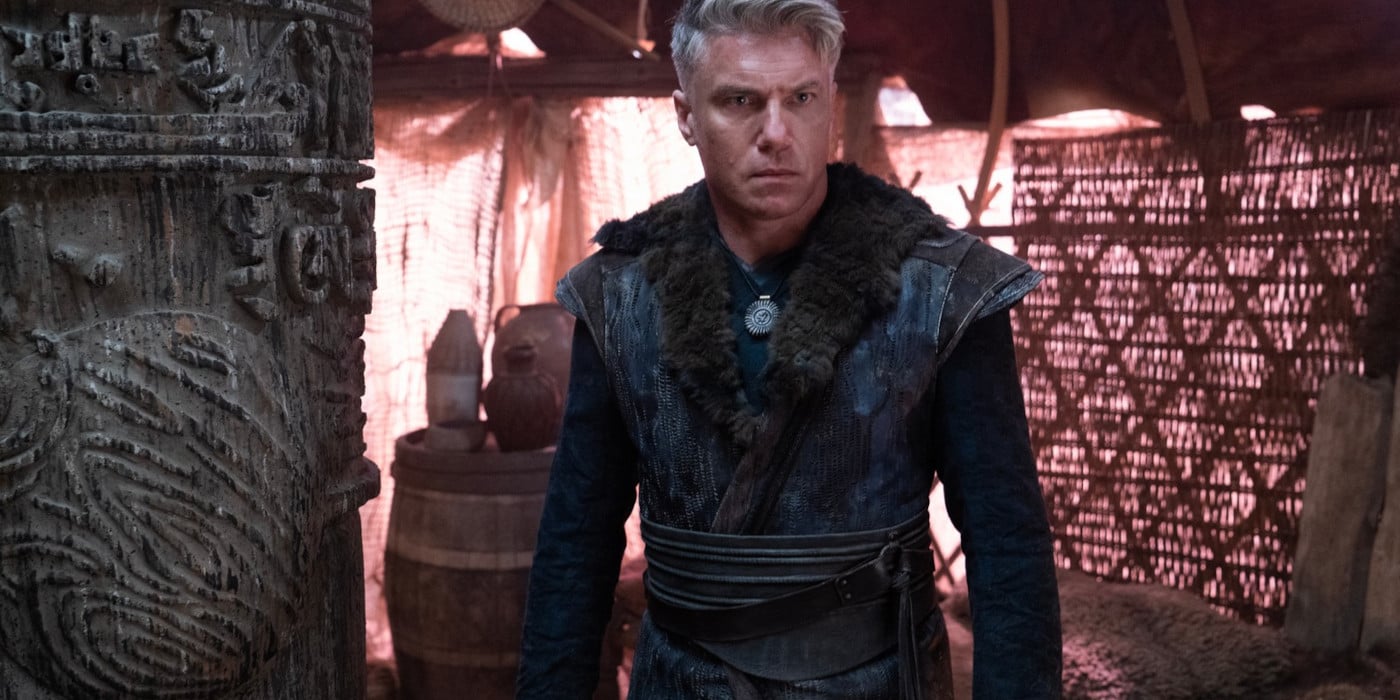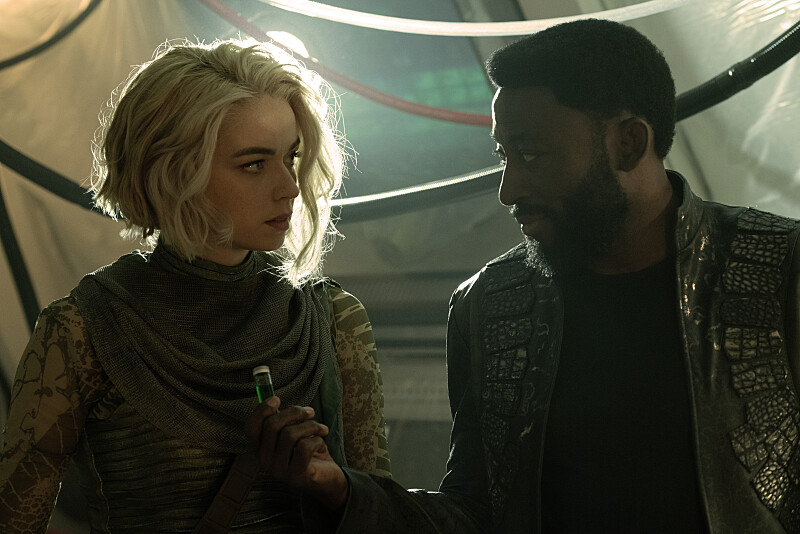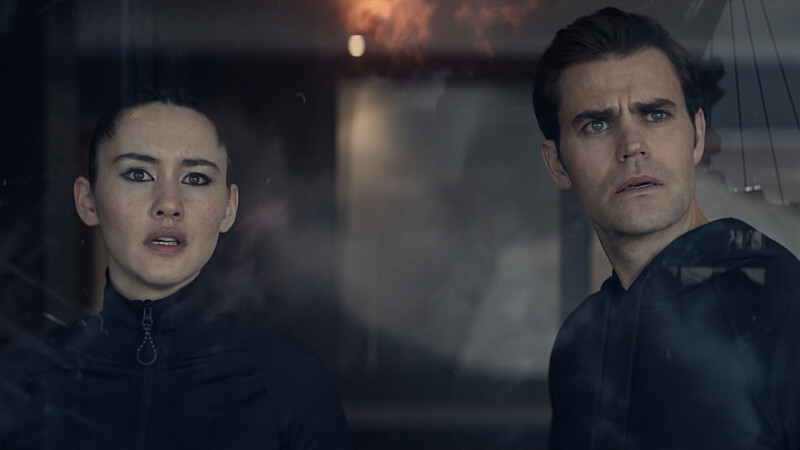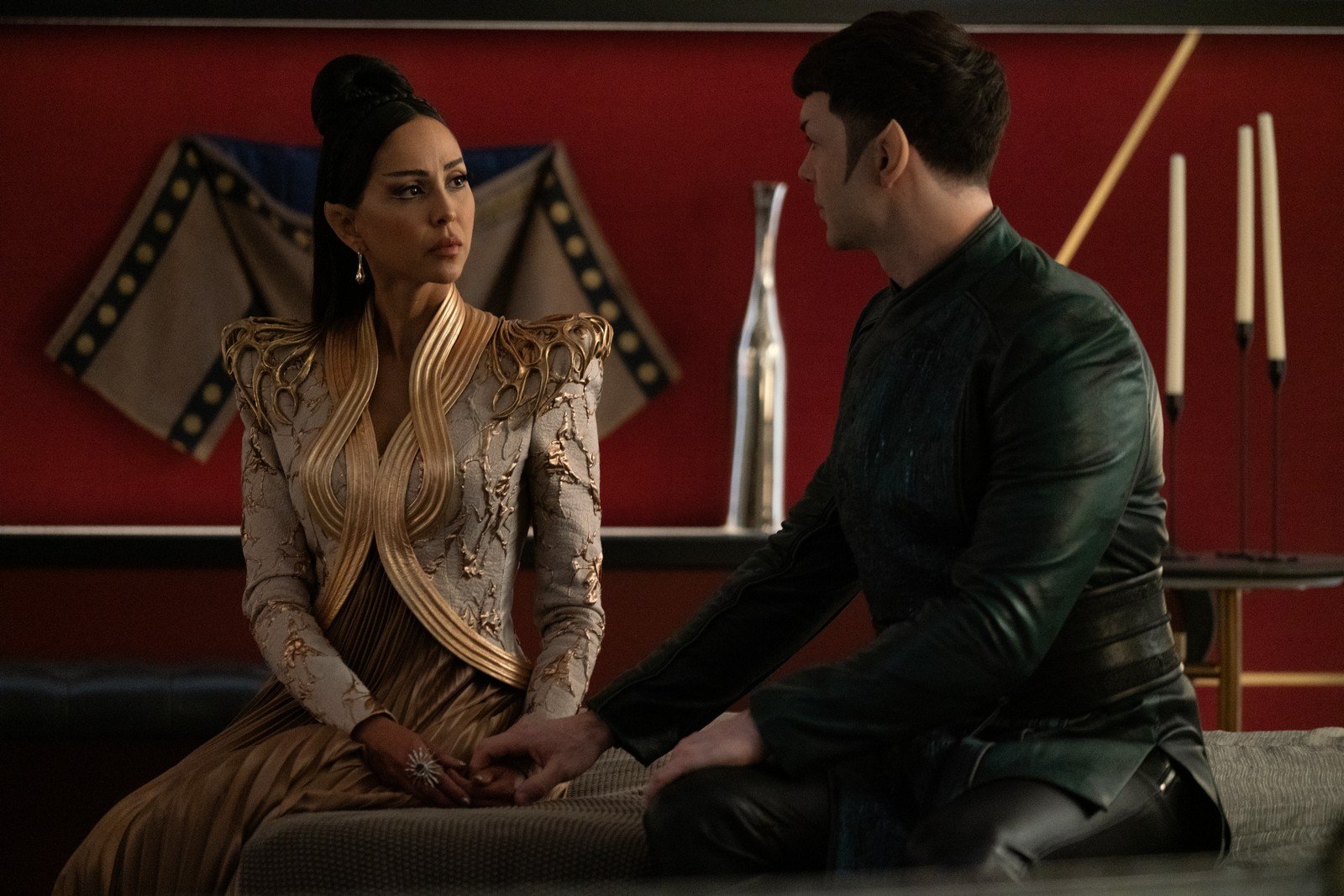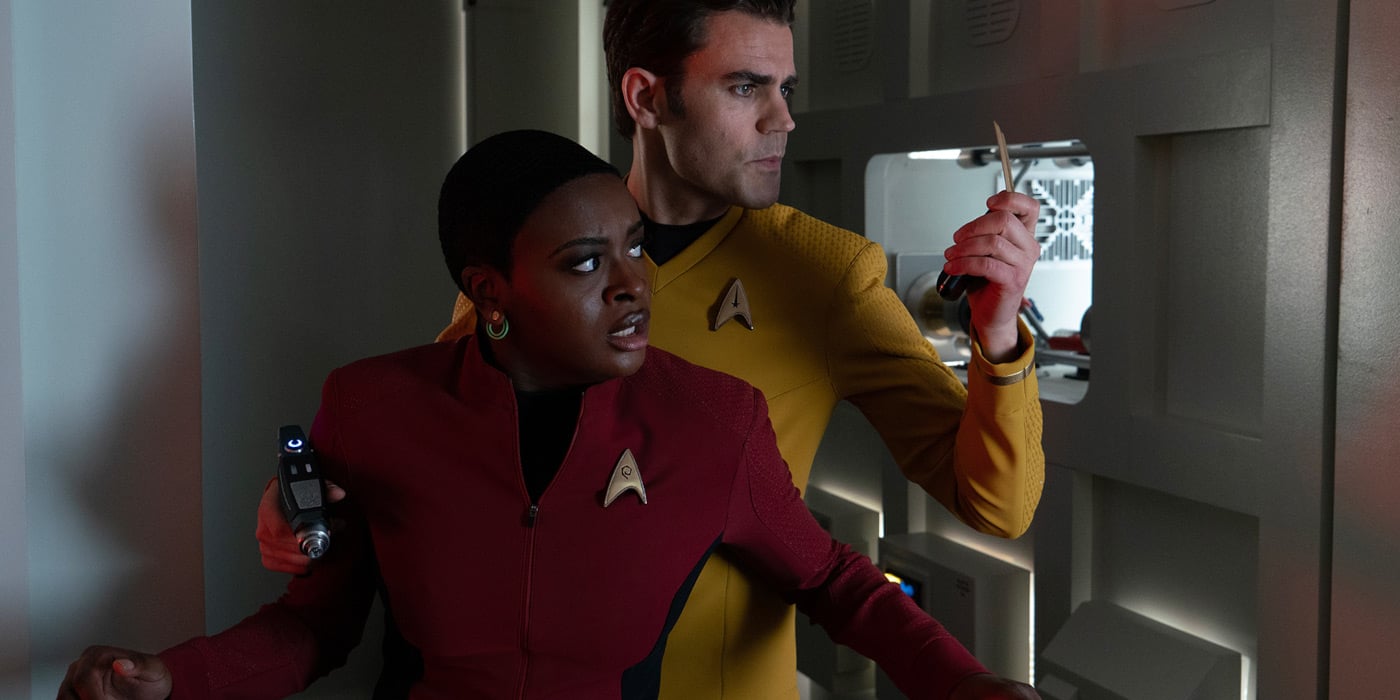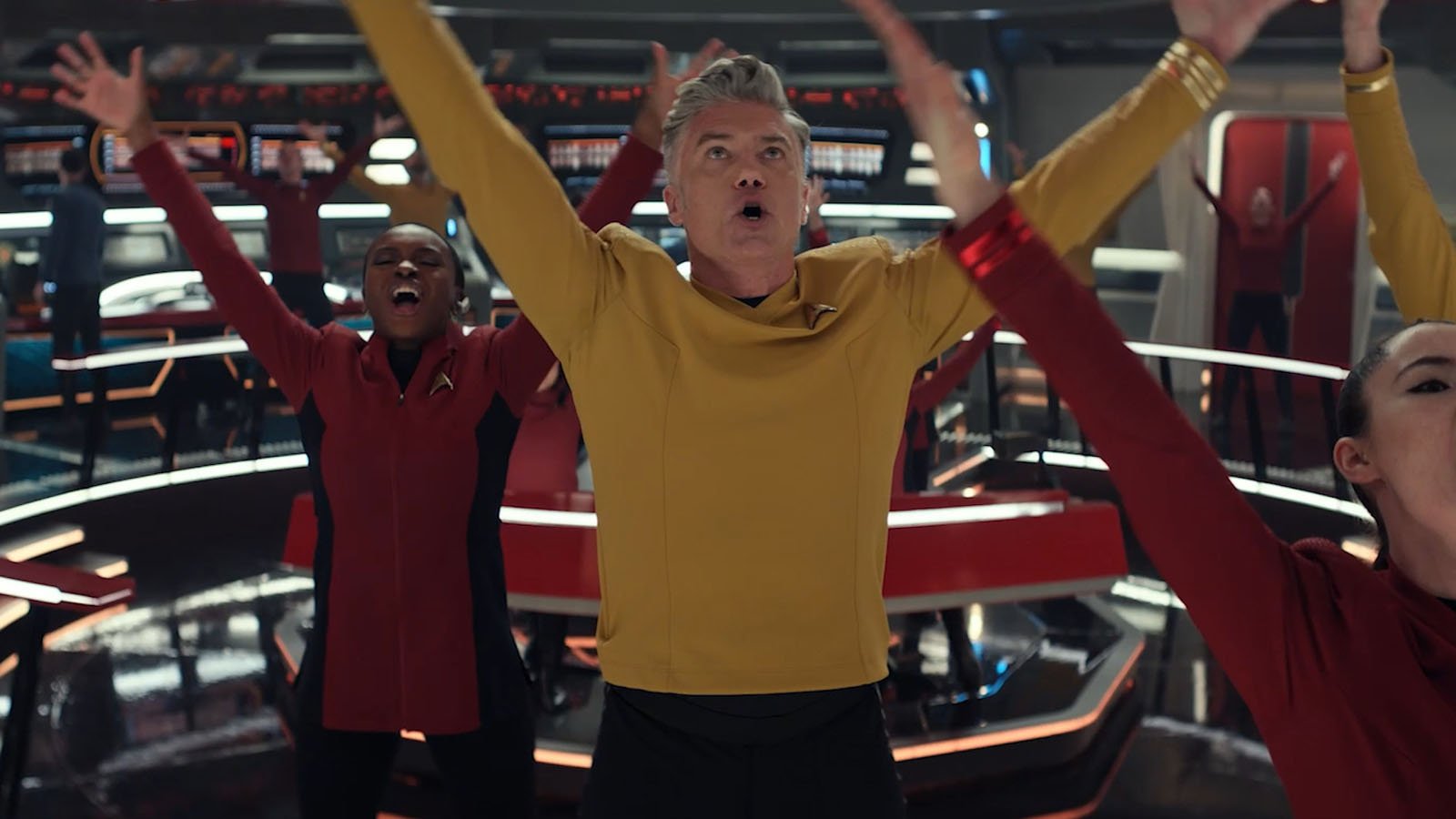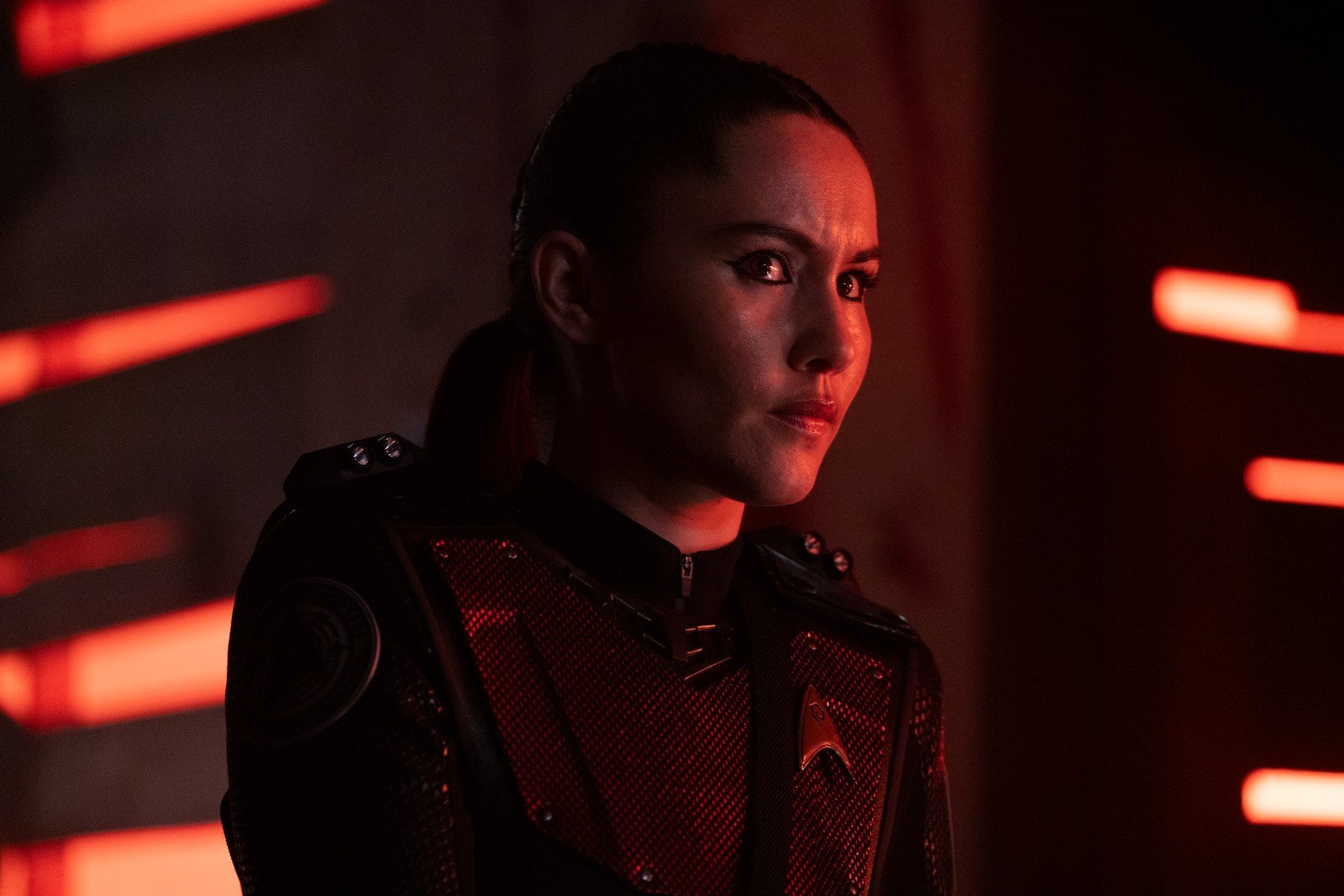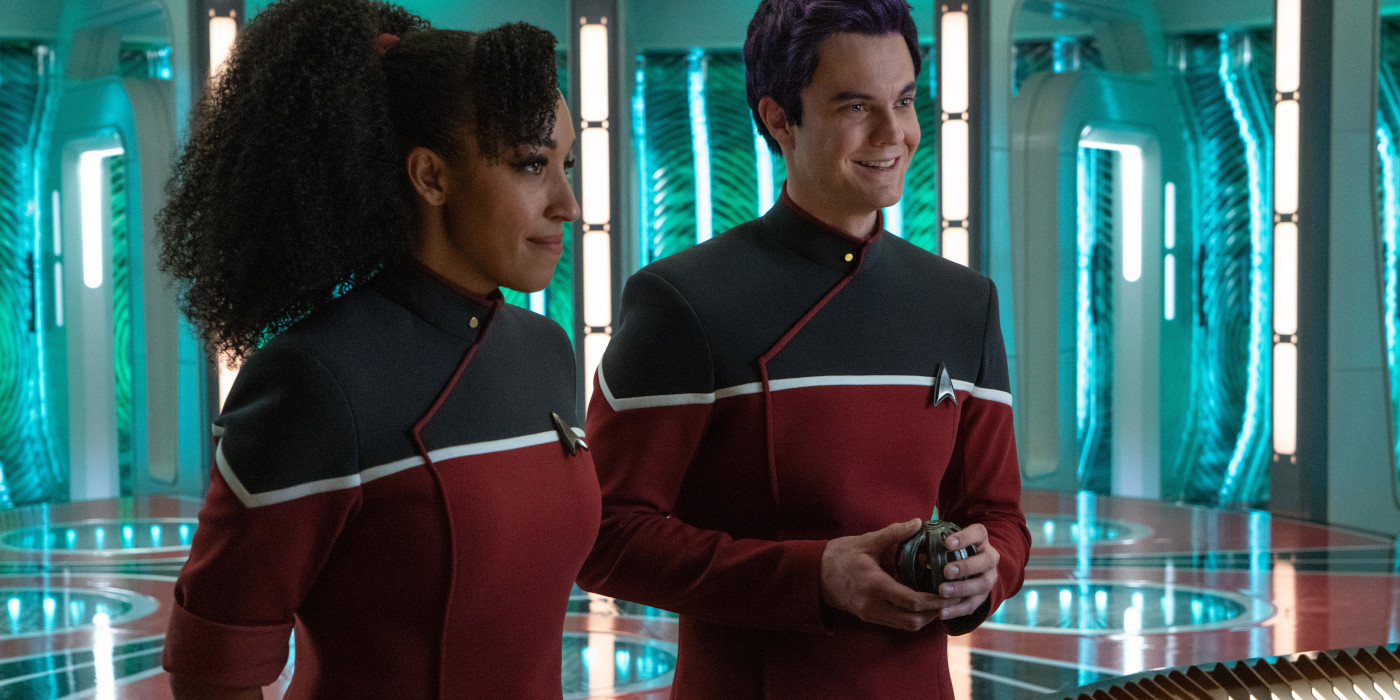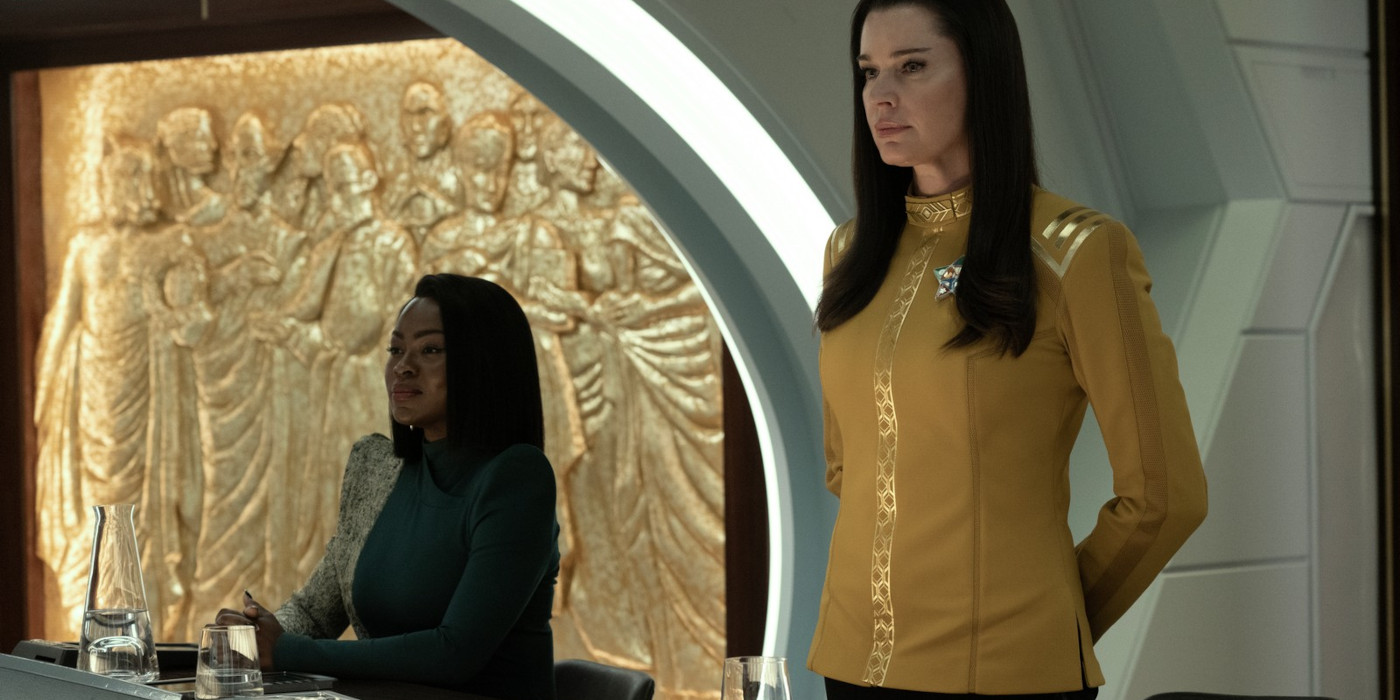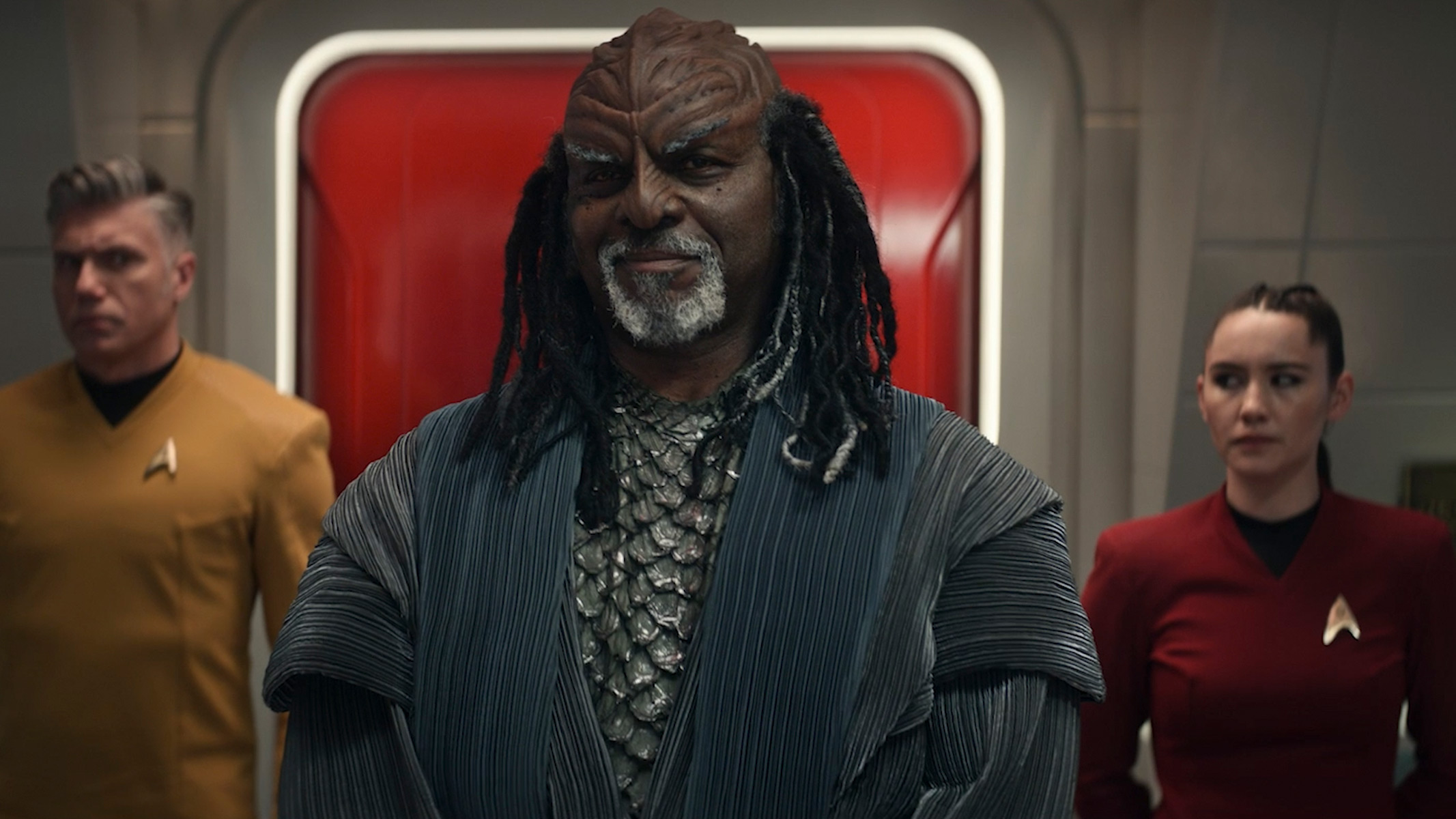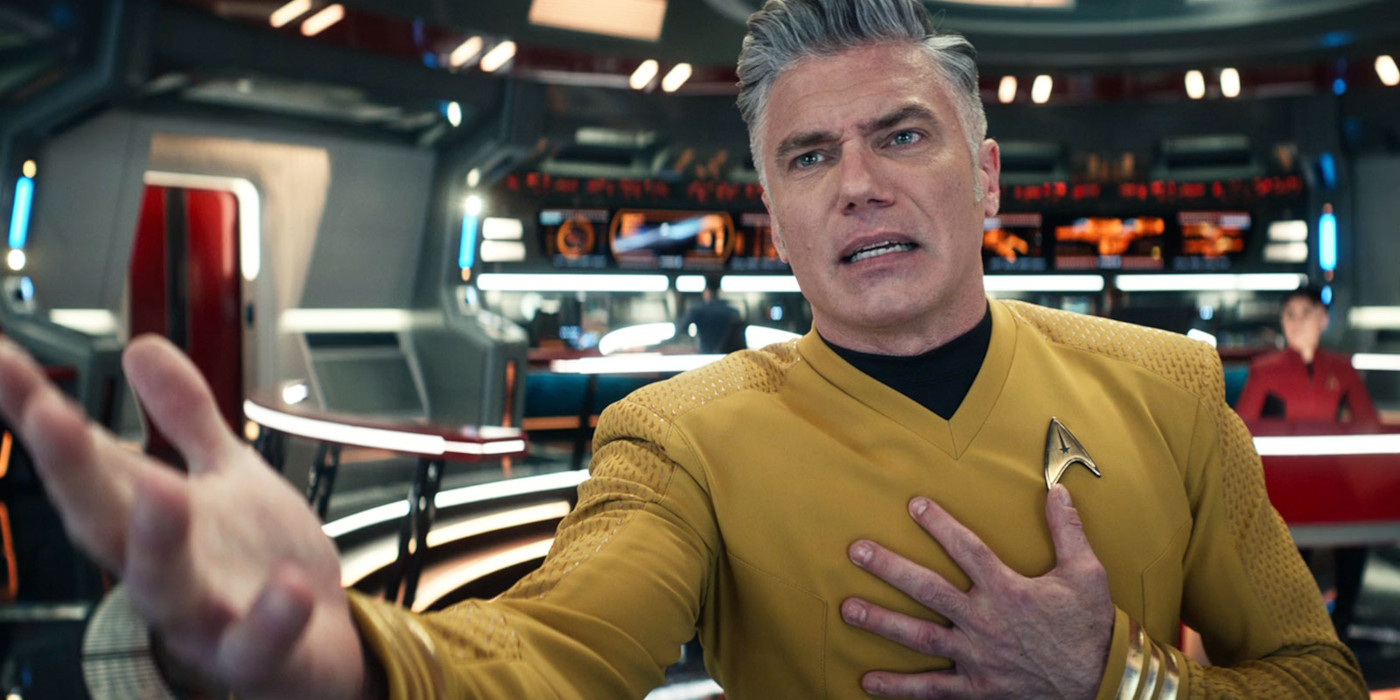‘Star Trek: Strange New Worlds’ Season 2 Episodes Ranked
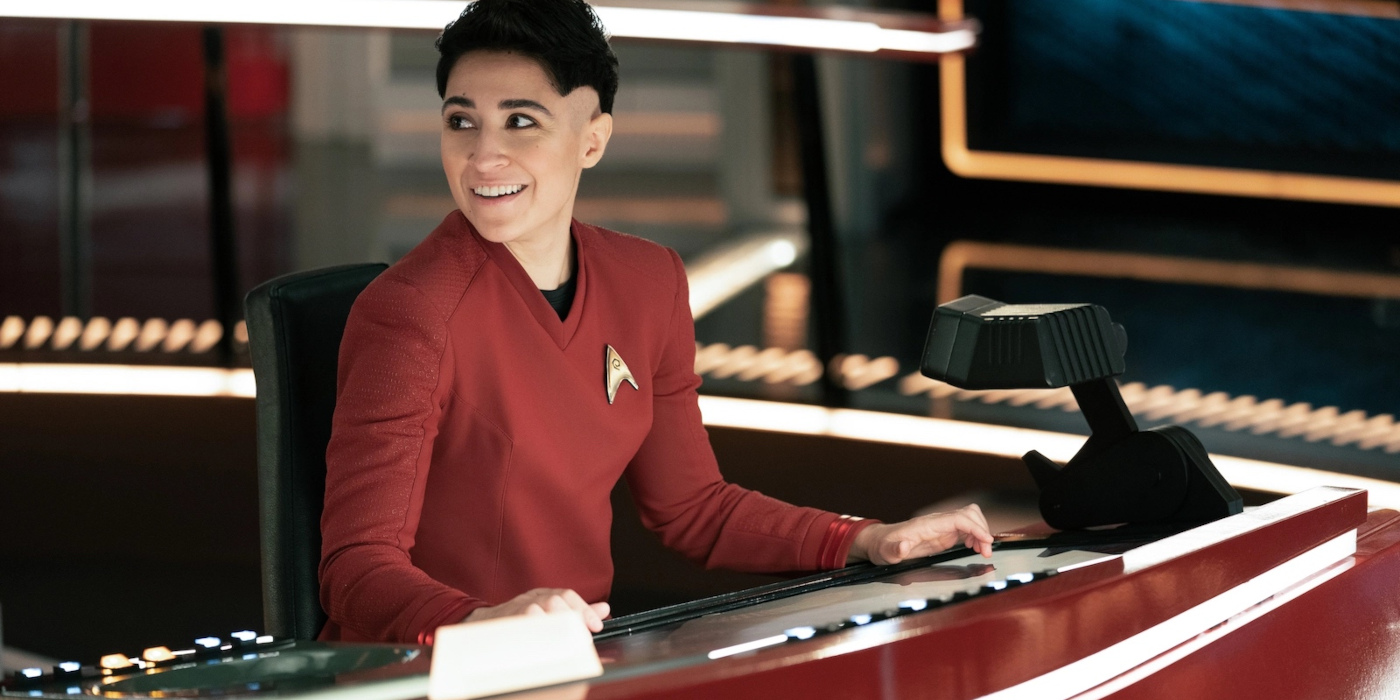
While we wait for Star Trek: Lower Decks season 4, let’s talk about the best live-action series of Strange New Worlds season 2.
Star Trek: Strange New Worlds season one is a rarity. It’s a Star Trek show that, by majority standards at least, is a success. It has stories that make you laugh, cry, and otherwise feel like you know and care for its cast of characters.
That first SNW season also plays things relatively safe. It uses episodic formulas classic Trek fans know and love. It largely features happy endings. Basically, it’s a season that doesn’t rock the boat. There’s a trans actor for one episode and the kinds of losers who get mad about that predictably got mad about that. But otherwise, that first season is good by way of playing it safe. Following the rules. Building a foundation.
Star Trek: Strange New Worlds season 2 is a whole different animal. Season 2 is all about big swings and big risks. And while that means the fans who get angry got angrier than last season, it also means a season of risks. And risk is Star Trek’s business.
So let’s rank every episode of Strange New Worlds season 2 and evaluate how each of them pushes Star Trek, as a franchise, forward.
10. “Among the Lotus Eaters”
“Among the Lotus Eaters” has a GREAT concept. Pike, La’an, and M’Benga go to Rigel VII and it’s basically planet of the reset button. If you stay there, you forget who you are. As homage, this works on multiple levels.
Firstly, Rigel VII is a planet Pike wants to forget because he lost a lot of people there way back in Star Trek’s original pilot. Second, the lost memory concept plays on the fact that classic Trek relies heavily on low-consequences, episodic storytelling. And third, the villain is an abandoned ensign, a pissed-off red shirt back for revenge. Redshirts always die on Star Trek, but what if one survived near death? Their commanding officer would have high consequences then, right?
“Among the Lotus Eaters” is at the bottom of the list for a simple reason: it does not live up to its potential. Ensign Zac Nguyen barely factors in. And the logical question, “who is Pike without his memories” gets too clean an answer.
The most frustrating aspect, though, is that this was supposed to be our Ortegas episode. Her storyline is all too brief. That said, guest star Reed Birney brings a stellar performer as Luq, a man running from his grief.
Truly, there are no “bad” episodes this season. “Among the Lotus Eaters” just misses the mark most. Moving on.
9. “The Broken Circle”
Strange New Worlds only has 10 episodes per season. So every time an episode feels both frivolous and middle-of-the-pack its weaknesses feel bigger. And that’s the actual problem with “The Broken Circle”. There’s loads to love: La’an and Spock both out-drinking Klingons, the introduction of Carol Kan’s mischievous character Pelia, and the blending of space battles and Spock’s devotion to Chapel are all very enjoyable.
But every aspect could’ve fit elsewhere. “The Broken Circle” feels unnecessary. It’s clearly meant to act as a bookend for “Hegemony” when it comes to both Spock/Chapel and the Gorn, but it’s a bookend we don’t need.
With only 10 episodes to play with, the frustration comes from two locations. One, that there are more worthwhile ideas to open a season. And two, waiting an extra episode to resolve last season’s Una cliffhanger feels like a mistake.
Still a good episode. Still fun. But of every episode this season, it feels the most fundamentally superfluous. And there’s no room for that.
8. Tomorrow and Tomorrow and Tomorrow
In a twenty-episode season, I love most of “Tomorrow and Tomorrow and Tomorrow”. But there’s only one series regular in 90% of the story and that feels like a waste of material.
That being said, La’an and Kirk traveling back in time to prevent Romulans from destroying the Federation before it starts is a banger of an idea. And thanks to Christina Chong and Paul Wesley, it absolutely sings. They have incredible chemistry. And it doesn’t hurt that Carol Kane gets a spot to comedically shine, too.
“Tomorrow and Tomorrow and Tomorrow” also features something important to Strange New Worlds -an explanation for why some things in the timeline change while others do not. Our time-traveling Romulan can push out Khan’s rise to power, but she cannot prevent it entirely. It’s the show’s way of saying “here’s why there’s wiggle room” while acknowledging that certain things are sacrosanct. I have mixed feelings about the execution of that idea, but it makes sense.
On a personal level, I do not like the resolution of the Khan story. Do I think it’s good for La’an to inspect how her relationship with Khan impacts her ability to connect? Yes. Do I think this episode grows La’an enormously? Absolutely.
But the moment she stares at Khan and says “he’s just a boy”? No. That does not work. Khan, increasingly, is a central figure in Star Trek’s history. And more and more he is written as a Hitler figure specifically. Show me your Hitler analog and say “but he’s just a little guy” and I’ll show you the spot where my people were nearly wiped out. I get the impulse. I do. But the execution doesn’t sit right.
Anyway! Moving on.
7. “Charades”
Vulcan hijinks! I love it! And this episode explores Spock’s human side in the biggest, most literal way possible. Ethan Peck is just glorious. His first appearances on Star Trek: Discovery were serious and dramatic and he is great at that. But boy howdy is Peck incredible as a comedic performer, too. The awkward laughing, the sour stomach, the… urges. He plays all of them with so much charisma and so much heart.
The other great aspect of “Charades” is the aliens who turn Spock human. They are, for lack of a better term, alien. Their names are colors. They are completely noncorporal as far as we know. And they don’t get human life at all. That leaves it up to Chapel to explain her feelings for Spock in the most awkward way possible. It’s very cute and it’s cool every time aliens on Star Trek aren’t just humans with bumpy foreheads.
That being said, there are resolution issues with “Charades”. On the one hand, yes, I absolutely agree with T’Pring when she splits from Spock. He keeps a big secret from her and it’s another in a long line of signs that he is not ready for marriage with T’Pring.
But the immediate hook-up with Chapel feels very fast. And a little mean, honestly. I’m not sure I buy Spock or Chapel going there that quickly. It makes me like them less and this is a romance that had been building very well up until this point.
One last plus: Mia Kirshner as Amanda Grayson is so good. She gives Spock’s mom a dimension I didn’t know I wanted her to have. Masterful.
6. “Lost in Translation”
Grief is an echo shattered across the mind, bouncing around the walls of our psyches with no means of escape. The more we try to ignore it, the louder the echo becomes. Grief cannot be defeated, but it must be confronted all the same. And that is what “Lost in Translation” is about. Confronting grief.
Uhura has no family. Her most chosen new family, Hemmer, died last season during a Gorn attack. Since then, Uhura has been working, distracting herself with the job so as not to confront her grief. But then one day aliens unable to communicate directly invade her mind, access that grief, and use it to communicate their pain. And in understanding their pain and saving alien life, Uhura understands her own pain and begins to heal.
The more I think about “Lost in Translation” the more I appreciate it. Not only is it a story about grief, it’s also a story where Uhura’s impossible pain is believed without reservation. And specifically, the person who believes and helps her most is James Kirk. “Lost in Translation” is this wonderful moment where, textually, we learn why Uhura and Kirk as so bonded.
The secondary plot with Pelia and Una works a little less. There’s a root of a good idea there: everyone avoids connecting with Pelia because they miss Hemmer. I believe that intrinsically, but there’s too much tell and not enough show in the episode itself.
5. “Subspace Rhapsody”
The musical episode is easily the hardest episode this season to rank. On the one hand, “Subspace Rhapsody” is a Star Trek first. It gives us the franchise’s first full-fledged musical. And that just on its own is glorious. The simple audacity to do that and still have it feel like Star Trek is incredible and worthy of the challenge.
Too many of the songs sound the same. I talk about this in the full review, but it takes eight years on average to mount a Broadway musical. It is so evident to me that the composers for this musical episode did not have ample time to write at their best.
The Buffy musical, whatever way you feel about it, understands that songs need both style AND subject to match the character who sings them. This happens with Chapel’s song and La’an’s as well. But there’s a lack of distinguishing attributes for most of the songs that remain.
All that said, of course use Celia Rose Gooding’s musical theater talent. Of course use Christina Chong’s beautiful singing voice. Next time (and there should be more singing on SNW, just give the composers more time.
And count me among the people who are pro-Klingon pop. It’s unexpected. It’s funny. And the fact that the public reaction is so divisive, to me, makes it a worthwhile risk. Give us something wild to debate!
4. “Hegemony”
If the creative team behind Strange New Worlds knew that a necessary and prolonged strike was incoming, would they have ended season two on a cliffhanger? The fact that we will not know the outcome of this story until 2025 is deeply frustrating. And more than that, it makes it hard to justify “Hegemony” on its own.
But let’s try anyway.
The Gorn in “Hegemony” are still “just monsters”. They wipe out most of a colony and they steal a lot of people (Enterprise crew included) by the end. There’s a hint that there may be more to them. But, like many of the other aliens from this season, the more may be largely beyond our understanding. It’s an interesting conundrum that ends with Pike staring directly into camera as if to say “what would you do”?
On the one hand, Pike’s inaction leaves us to try and decide what is right. On the other hand, it makes him seem like a weak leader.
That being said the stuff that works, really works. Chapel declaring she will not allow Batel to die is powerful and shows how strong she is. The entire introduction of Scotty is equal parts exciting and whimsical. Absolutely love that Pelia is the one who nicknames him Scotty.
I do wish Creative would ease up on using Xenomorph aesthetics as a shorthand for “evil”. I get wanting to dial into the cultural consciousness, but also Star Trek is the “boldly go” franchise. Let’s hope they boldly take the Gorn to newer, less well-trodden places.
3. “Those Old Scientists”
The top three episodes this season were a lock the moment I saw them. You could place these in any order and I’d agree with you. “Those Old Scientists” aka the Lower Decks crossover goes at number three because it is the most fun but the least hefty. That’s it. That’s the metric.
Boimler and Mariner turning live-action and going to a show that isn’t all Easter eggs all the time feels like it should not work. I have watched this episode many times. It works SO WELL. Director Jonathan Frakes along with Jack Quaid and Tawny Newsome just get it. They change the temperament of these characters just a little, and voila! They fit perfectly in Strange New Worlds.
Every joke lands, but Boimler yelling “Riker” as he rides Pike’s saddle is just gut-busting. And it helps that at the heart of it all is this story about not working too hard. Also, not all Orions are pirates and thieves. Oh, and Una is the poster woman for enrolling in Starfleet? That makes me feel so good!
If I want to feel good, “Those Old Scientists” is the episode I’m putting on. Show me Boimler and Spock almost blowing themselves up any day. It never gets old.
2. “Ad Astra Per Aspera”
Courtroom dramas are quintessential. There are so many courtroom episodes of Star Trek you could call it Night Court. You get it? Because it’s always night in space?
Anyway, “Ad Astra Per Aspera” is the most “the story we need right now” episode of the entire season of Strange New Worlds. It’s about how much sense it doesn’t make to punish people who modify their bodies. That’s precisely what the Illyrians do. They modify to suit where they live and to suit who they are. The Illyrians truly can stand in for anyone but they represent trans people so perfectly right now it’s impossible not to draw the comparison.
Yetide Badaki’s performance as Neera is the best of the entire season. I love that she takes a firm hand with Una, who has only just come out as an Illyrian. Just like in real life, sometimes people who just came out want to talk loud. Una needs to lay back, listen, and learn from Neera.
I love that there’s no clean resolution. Una gets her post back but her people still face oppression. Everything that happens in the episode has real-life analogs. Every speech and every stance taken rings true. And just like all the best courtroom episodes of Star Trek, it’s not the person who is on trial, it’s humanity.
1. “Under the Cloak of War”
The scars of war never heal and it takes very little for those wounds to reopen. In “Under the Cloak of War” M’Benga compares himself with a broken bio bed. Both will work, but both inevitably break down. This is an episode where M’Benga fails his duty of care. And it works so well.
The delineation between the Enterprise crew who have seen war and the ones who have not is so striking. Pike, Una, and Uhura all want to see the best in Ambassador Rah because he represents a black-and-white version of reality: Federation good, Klingon Empire bad. But Chapel, Ortegas, and M’Benga all know better.
Technically only M’Benga knows the whole story, but they each sense something and it’s interesting how that plays out. Ortegas is a bigot, straight up. She thinks Klingons are bad. Chapel just does not like how Rah tries to act like he didn’t kill a lot of people.
But M’Benga knows that he is the biggest killer of them all. And that Rah is taking credit for M’Benga’s kills in the name of peace. But you can’t build peace on a foundational lie–not forever. And while you cannot justify M’Benga killing Rah, you can understand why Chapel covers for him.
Because M’Benga is a good man and a good physician. Except when he breaks down. Star Trek usually doesn’t have the courage to write a character like this. I’m glad they did here. It’s the best episode of this season of Strange New Worlds precisely because it lets our veterans be human.

